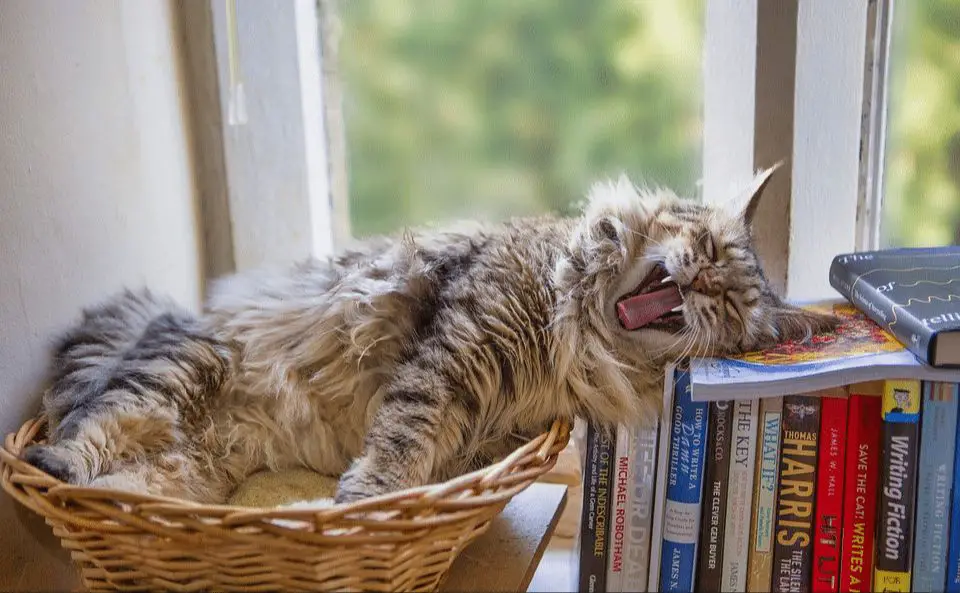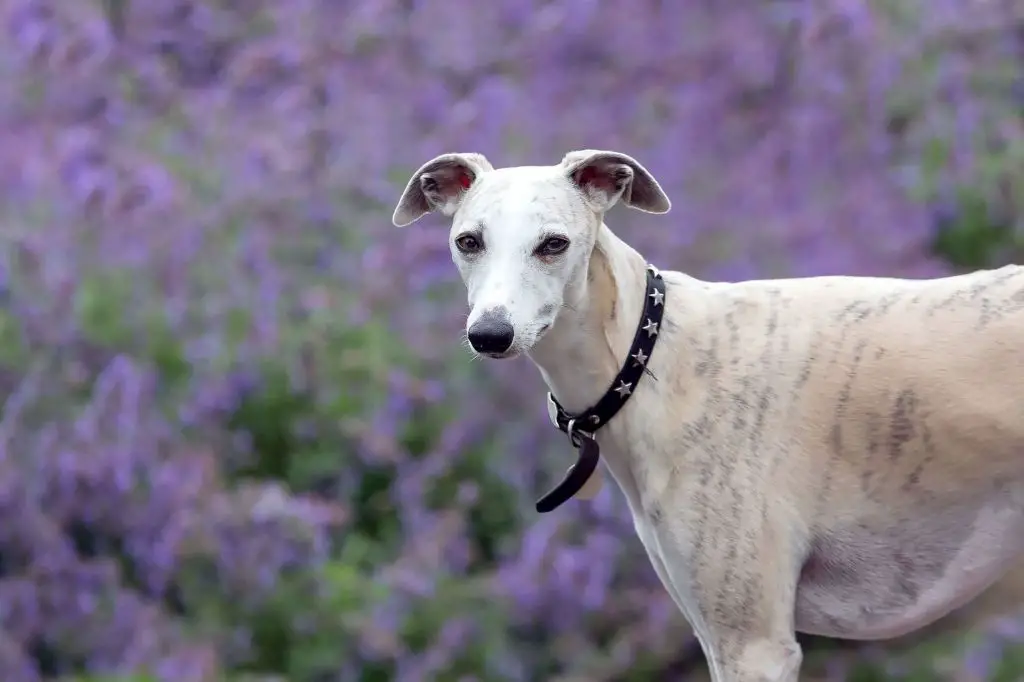What is catnip?
Catnip (Nepeta cataria) is a perennial herb from the mint family Lamiaceae. It has grey-green leaves and small white or lavender flowers. The most active chemical compound in catnip is called nepetalactone, which can cause a euphoric effect in cats.
When cats smell or eat catnip, the nepetalactone binds to receptors in their brain and triggers a response. Effects can include sniffing, licking, chewing, head shaking, rolling, and rubbing. The substance essentially makes cats temporarily “high” for 5-15 minutes before they lose interest.
Catnip is part of the mint family and grows as a natural mosquito, roach, and rat repellent. But for reasons not fully understood, about 50-70% of cats go crazy after smelling or eating catnip.
Sources:
https://www.petmd.com/cat/general-health/what-is-catnip
https://www.humanesociety.org/resources/crazy-catnip
Does catnip affect dogs?
Despite the name, catnip does not affect most dogs the way it does cats. The active chemical in catnip is called nepetalactone, which binds to receptors in a cat’s nose and induces a euphoric reaction. However, this chemical typically does not have an effect on dogs due to differences in their olfactory systems.
Some dogs may show mild reactions to catnip, including overexcitement, hyperactivity, and anxiety. However, these effects are not as common or intense as those seen in cats. Most dogs will simply ignore catnip and show no noticeable behavioral changes when exposed to it.1 So while catnip can be safely given to dogs, it does not produce the intense high in dogs that is seen in cats.
Active Chemical in Catnip
The main active chemical in catnip that attracts cats is called nepetalactone. Nepetalactone is an organic compound that binds to olfactory receptors in a cat’s nose and has neurological effects. According to research from the University of Florida, nepetalactone belongs to a class of chemicals called iridoids, which can act as effective insect repellents [1]. Many plants related to catnip also contain nepetalactone.
When a cat inhales nepetalactone, it activates their olfactory receptors and triggers a response in their brain that humans don’t experience. Nepetalactone causes cats to act playful, exhibit rolling behavior, rub against objects, and show other signs of being affected by catnip [2]. However, not all cats are affected by nepetalactone – genetics determine whether a cat will respond to it or not.
Catnip toxicity in cats
Catnip has very low toxicity for cats when used appropriately. The active chemical in catnip, called nepetalactone, binds to receptors in a cat’s nose and has a stimulating effect. While many cats enjoy this sensation, catnip does not produce addiction or dependence.

According to the ASPCA, “There’s no evidence that catnip is harmful to cats or young kittens. However, if they eat a lot of the fresh or dried catnip leaves, they can get an upset tummy.” [1] Large amounts of catnip may cause digestive upset like vomiting or diarrhea, but there are no serious effects.
The toxic effects of catnip are short-lived, lasting only a few hours until the cat vomits or has diarrhea to expel the irritant. According to WagWalking, “Without complications, this passively ingested toxin can work its way out of your cat’s system rather quickly.” [2]
Overall, catnip is considered very safe for cats when used responsibly. Giving a small amount of dried catnip or catnip-filled toys is unlikely to cause any harm.
[1] https://www.aspcapetinsurance.com/resources/what-does-catnip-do-to-cats/
[2] https://wagwalking.com/cat/condition/catnip-poisoning
Catnip toxicity in dogs
Catnip is generally not toxic to dogs.12 The active chemical in catnip, called nepetalactone, does not have the same euphoric effect on dogs as it does on cats. While most cats respond to catnip by rolling around, meowing, and exhibiting hyperactive behavior, catnip usually has more of a sedative effect on dogs.
Though not common, some dogs may experience mild gastrointestinal upset if they ingest very large amounts of catnip. The exact amount that triggers symptoms can vary based on the size and sensitivity of the dog. An upset stomach from too much catnip will likely result in vomiting and/or diarrhea, which should pass within a day. Most dogs will not continue to eat catnip once these negative effects set in.
Overall, casual exposure to catnip is not a major concern for dogs. However, dogs should not be intentionally given large quantities of pure, undiluted catnip. Cat owners should also keep catnip-filled toys away from dogs, who could get sick if they chew these up and swallow a great deal of loose catnip. With reasonable precautions, catnip is generally safe for canine household members.
Signs of Catnip Overdose in Dogs
The main signs of a catnip overdose in dogs are:
– Agitation and hyperactivity:
Catnip can make some dogs very energetic, hyperactive, and restless. They may run around nonstop, jump on furniture, or be unable to settle down.
– Gastrointestinal upset:
Eating too much catnip may cause vomiting, diarrhea, and other stomach issues in dogs. It can irritate the digestive tract.

– Drooling and vomiting:
Overdose of catnip can also lead to excessive drooling and vomiting in dogs as it upsets the digestive system. Forceful vomiting of undigested catnip may also be seen.
Other symptoms like lethargy, breathing issues, muscle tremors, and loss of coordination can also occasionally occur in more severe overdoses. Mild overdoses may only cause short-lived effects like hyperactivity before the dog returns to normal.
If a dog has ingested a large amount of catnip, it is important to immediately contact a veterinarian for guidance on inducing vomiting and addressing any concerning symptoms.
Some key tips are to remove access to any additional catnip and monitor the dog closely for several hours. Try to keep the dog relaxed and hydrated until the effects wear off.
Most cases of catnip overdose in dogs are not life threatening, but prompt veterinary care is still recommended, especially if severe symptoms appear.
Treating catnip overdose
If your dog has consumed too much catnip, the first step is to remove access to any additional catnip. This will prevent the dog from ingesting more and worsen the overdose effects. Be sure to check the dog’s environment thoroughly and dispose of any catnip plants, toys, or treats.
In most mild cases, the effects of catnip overdose in dogs will wear off on their own within a few hours as the active chemicals are metabolized and excreted. It’s important to keep the dog comfortable and hydrated during this time. Place them in a quiet, safe area so they can rest and recover.
If a dog exhibits more severe symptoms like vomiting, diarrhea, tremors, or lethargy after eating catnip, it’s best to contact your veterinarian. They can assess your dog’s condition and provide supportive care as needed, such as IV fluids or anti-nausea medication. Severe catnip toxicity may require hospitalization for monitoring and treatment. Quick veterinary care can help manage any complications and promote a full recovery.
According to WagWalking, catnip poisoning is not a true poisoning in dogs but rather an overstimulation from the active chemicals. So treatment is focused on allowing those chemicals to leave their system through rest, hydration, and veterinary monitoring when warranted.
Preventing catnip overdose
To prevent your cat from overdosing on catnip, it’s important to limit their access and exposure to it. Here are some tips:
Limit catnip use. Only give your cat catnip occasionally as a special treat. Daily or excessive use can increase the risk of overdose. Stick to the recommended serving size from the packaging or your veterinarian’s advice.
Store catnip securely. Keep any unused catnip out of reach of your cat. Store it in sealed containers in cupboards they can’t access. Never leave catnip or toys filled with it sitting out unattended.
Supervise playtime. When you do give your cat catnip, supervise them during play sessions. Watch for signs they may have had too much, like lethargy or lack of coordination. Collect the toys once playtime is over.

Following these tips can help prevent your cat from consuming dangerous amounts of catnip leading to overdose. Be sure to monitor your cat closely anytime catnip is given. If you have concerns, consult your veterinarian for advice on safe catnip use.
Safety tips for dogs
While catnip is generally safe for dogs, it’s best to avoid giving your dog large amounts of pure, undiluted catnip. Consuming excessive amounts can potentially cause an upset stomach or diarrhea (source). Start with small amounts of catnip or catnip-infused toys to see how your dog reacts.
Monitor your dog for signs of an upset stomach or diarrhea after exposure to catnip. Discontinue use if these symptoms develop and call your vet if they persist. According to veterinarians, signs of toxicity or overdose are very rare in dogs (source).
Ask your vet before giving catnip to your dog, especially if they are on any medications or have health conditions. Some supplements and medications can potentially interact with catnip.
When to call the vet
In most cases, your dog will recover from a catnip overdose on their own with minimal intervention. However, you should contact your veterinarian if your dog experiences concerning symptoms like prolonged vomiting, diarrhea, or lethargy after ingesting catnip.
According to veterinarian Dr. Ivana Crnec (as cited in this article), you should seek veterinary attention if vomiting persists for more than 24 hours or diarrhea lasts over 48 hours. Lethargy, weakness, or other neurological symptoms are also reasons to have your dog examined.
Underlying health conditions may make your dog more susceptible to complications from a catnip overdose. For example, dogs with liver or kidney disease may struggle to metabolize and excrete the nepetalactone in catnip. Senior dogs or those with chronic illnesses should be monitored closely after ingesting catnip.

Contact your vet promptly if your dog has any known health issues and shows concerning signs after eating catnip. They can determine if your dog needs supportive care like IV fluids or anti-nausea medication to recover safely.

